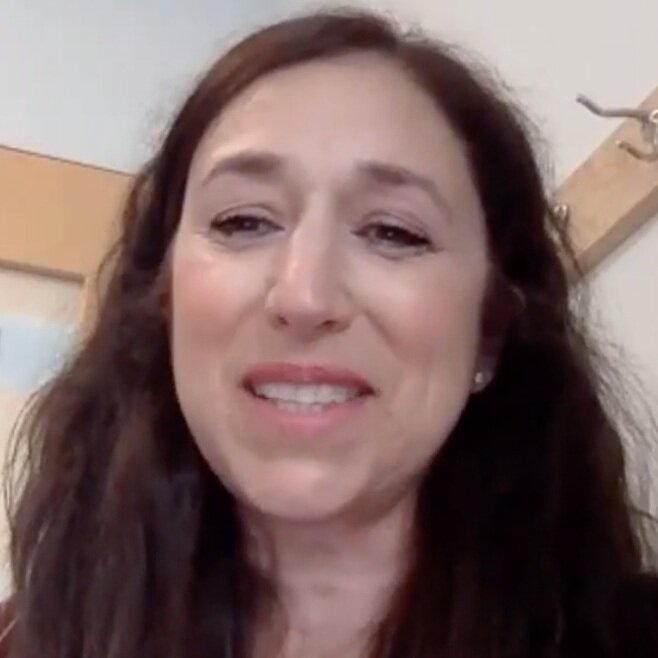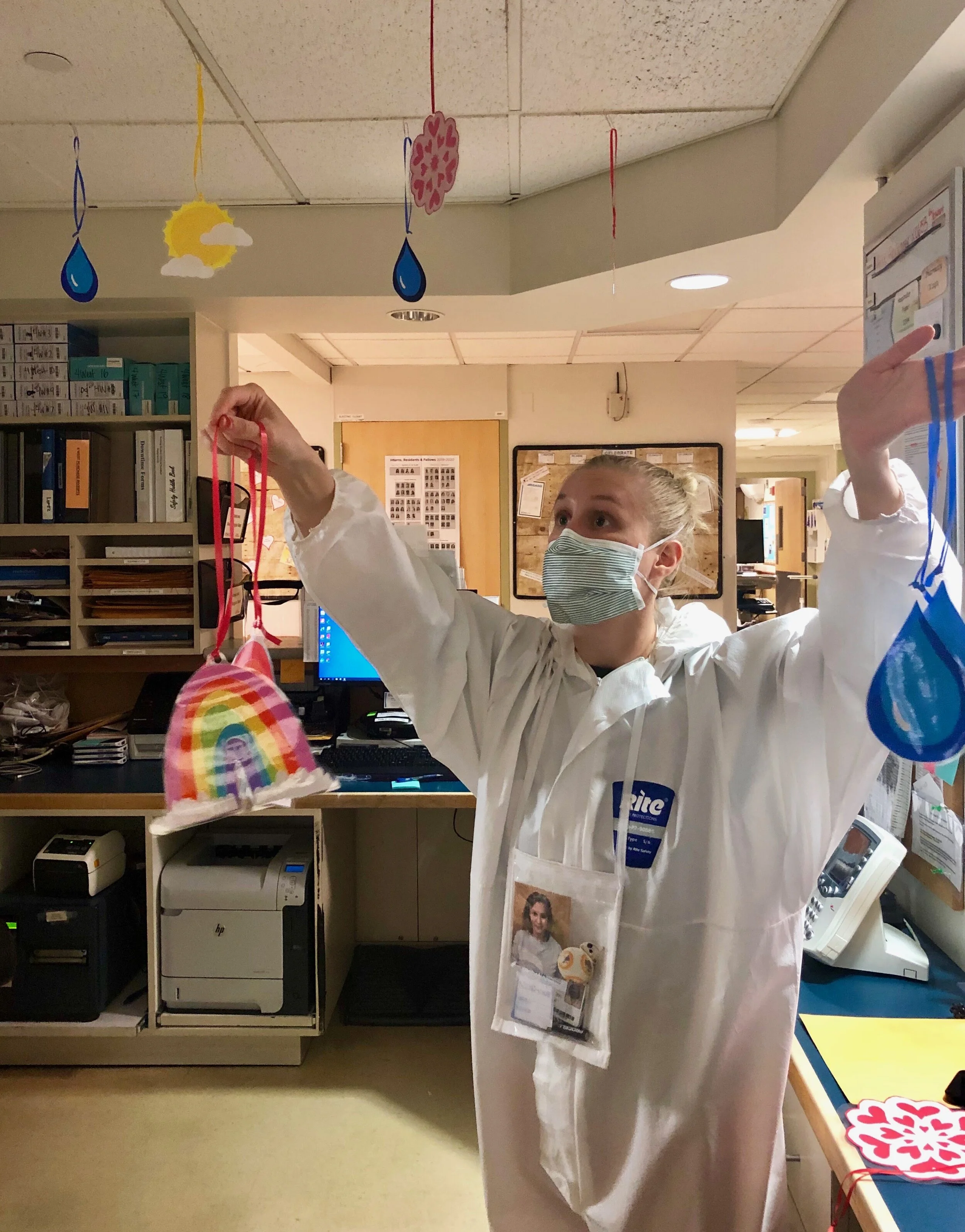By Shaler Wright
Every year I make the same wish on my birthday. No matter how many candles there are to blow out, I close my eyes, take a breath and wish — to sleep. Deeply, peacefully, without pain, and without medication. Hamlet’s words ring out like a hopeful refrain in my mind. “To sleep, perchance to dream” is my mantra to self-charge when endurance runs low.
Doctors don’t know what to make of me. Such a bright, well spoken, friendly woman. But those widespread symptoms? That intermittent pain, migrating aches? And those inconclusive test results! “She’s so high functioning in daily life, what could possibly be wrong?”
My complaints can’t be neatly gathered under a classic diagnosis, so it’s been repeatedly suggested that my discomforts are a fluke, not really so bad, the result of stress, or dramatic imagination. And then I’m offered that familiar, dismissive smile that lets me know I’ve come to the end of another road. I brace myself for what comes next... “Have you ever considered therapy?”, they ask. I sigh quietly, “Yes I have, but I’m willing to try again.” And snip-snap, just like that I’m referred to a psychiatrist to learn how to become less ill. This is the repetitive cycle of my health story.
After thirty years and a cornucopia of psychiatric medications that made me feel worse, I learned that the best way to feel better is to stop telling doctors I don’t feel well. It’s not worth the risk, the humiliation or shame. And it’s definitely not worth the side effects of the latest and greatest pill, or the months lost while trying to be patient and give it time to work.
I’ve given decades! So, lack of patience is not my problem. Nor is lack of compliance. My problem is that doctors — through no fault of their own — haven’t been asking the right questions or ordering the right tests. But I didn’t know that at the time, and I hadn’t yet learned to trust my own experience of my body.
Instead, I learned to believe that I am the problem.
“I’m a wimp. A complainer. Dramatic”
And that didn’t feel good.
So I adapted. I trained my brain to tolerate pain and label it as merely discomfort. I diminished my feelings to the point of dissociating from my body. And I learned to separate my perception of pain from my experience of pain. Distraction became my greatest ally. “If I can’t make the pain go away (and since I’ve been told it isn’t even real), I’ll just ignore it.”
Hmmph.
The problem with that technique is that you lose touch with what is real and what is not. And you start to feel like a fake, like you’re the emperor with no clothes, but the only one you’re fooling is yourself. And you begin to doubt yourself, not just in relation to your health, but also your opinions on other matters. You give up your own sense of true north and are left without a personal compass.
Who can you believe, who can you trust, when you can’t even trust yourself?
For me, the answer came unexpectedly. Like my own personal Mary Poppins riding in from the east with the winds of change: A new doctor.
This doctor is different. David London is a psychiatrist (ack!), but also a Functional Medicine MD, trained in Chinese medicine and Buddhist meditation. For two years he quietly listened to my weekly word-dumps without suggesting medication. Instead, he taught me to breathe. And visualize. I learned to visualize comforting space at night, like a cloud around my pain. And it works well enough to let me sleep for a few hours, enough to be highly functional the next day. It’s the best I’ve felt in years, but my Mary Poppins-doctor believes I can feel even better, and he continues to contemplate the puzzle of my health.
You see, Dr. London has this theory that we all have an inner bucket where bad stuff is stored. And for some people, the bucket is never filled. But for others, for reasons we may not fully understand, their bucket gets filled to the brim and eventually overflows. And this overflowing muck-bucket causes illness.
I immediately envision a steamed lobster with a belly full of green tamale and tell him it’s disgusting to think of myself as full of toxic waste! He reassures me it’s not because I’ve done something foolish or wrong. It might even be genetic. And there’s a test that can prove it.
I ask to have genetic testing and the results show that I am indeed one of the lucky few who has trouble clearing certain toxins. I don’t know how to feel about that. I feel both validated and discouraged. Ugh. It sounds like a hopeless predicament and I visualize the possibility of sending myself off in a canoe to disappear over the horizon.
But Poppins-doc has other plans. He encourages me to familiarize myself with the pioneering work of research physician Ritchie Shoemaker. Though sometimes deemed a controversial character, Dr. Shoe’s abundance of published papers and long list of appearances/testimonies before congress and parliaments are enough to convince me to pay attention to his ideas. That and the fact that he’s a really nice guy.
Ritchie Shoemaker believes that some people have a genetic haplotype that prevents them from clearing toxins. And over time these toxins build up, and our bodies try to fight their effects in various ways, and some of these ways wreak as much havoc as the toxins themselves. All kinds of crazy stuff can happen — headaches, sweats, insomnia, chest pressure, foot cramps, ringing ears, aching hips, swollen ankles, shortness of breath, and most debilitating of all — cognitive dysfunction.
Yep. Brain Drain was the big one for me. When I first met with Dr. Shoemaker, he confirmed that cognitive issues are often the last straw for highly functional patients like me. We cope and adapt and carry on, thinking of our body as an obstacle to overcome. But when illness begins to take our mind, we grapple with the possibility that perhaps we are outmatched. No amount of visualizing will get our brains back. He said, “I’m sure you’ve been told ‘it’s all in your head.’ Well guess what? It is! And we can heal it.”
Wowza.
I’ve been feeling validated for about two months now. My illness is real and according to the tests ordered by Shoemaker, my results indicate I have Chronic Inflammatory Response Syndrome (CIRS). CIRS is a multi-system, multi-symptom illness, not yet recognized by health insurance providers, but increasingly relevant in today’s world of bio, chemical and environmental toxin overload.
I’m feeling hope that I may have finally found my tribe. Patients like me. It’s not a tribe many would choose, but for those of us who have had it thrust upon us, we are grateful to be named and recognized. My road to wellness is still long, but at least now I have a plan. And thanks to Poppins-doc and Dr. Shoe, I may just get my birthday wish in a year or two.
———
Shaler McClure Wright is fascinated with the mysteries of creative process and the healing power of creativity. She’s worked as an actor, writer and educator for more than 40 years, and lives in southeastern Connecticut with her son and husband.








































